Revision rhinoplasty is a surgery that aims to correct unsuccessful results after nasal correction surgeries that have already been performed. Revision rhinoplasty is the only way out for patients who have significant visible deformity or functional damage to the outer nose after rhinoplasty. Thus, sometimes after rhinoplasty, patients experience an unnatural deviation or noticeable asymmetry in the wings of the nose. Sometimes the humped nose "saddle" turns into a nose - with the back of the nose too low because the surgeon has removed too much bone or cartilage tissue.
It also happens that the reason for the patient's dissatisfaction is not related to the technique of the surgery, but to the individual characteristics of the body. For example, after healing, the scar on the columella will be large and noticeable. The nasal septum appears more convex and visually lengthens the nose as a result of a tendency to unpredictable growth of scar tissue or improperly performed surgery. Revision rhinoplasty makes it possible to solve such problems and restore the natural correct shape of the nose, restore the functions of nasal breathing, and restore the patient's self-confidence and attractiveness.
Secondary rhinoplasty - approaches and methods
Usually, patients who present for secondary rhinoplasty are frustrated, cautious people who can hardly believe in the successful outcome of a second surgery. During the consultation, we will try to collect a thorough medical history, study photographs before the rhinoplasty to understand what manipulations and on what nasal structures were performed. Such patients are advised to undergo an MRI prior to a revision rhinoplasty - analysis of this data will allow us to form an objective picture of the internal structures of the nose, outline the surgical plan, and agree with the patient on the possibility of a revision rhinoplasty.
Curved nose after rhinoplasty
One of the main complaints of the patients is that after the rhinoplasty the nose is crooked, the tip of the nose is not elegant enough, there are bulges and depressions in the back of the nose. Sometimes nose contouring is recommended to correct minor imperfections. But unfortunately, major bugs can only be fixed in a second operation.
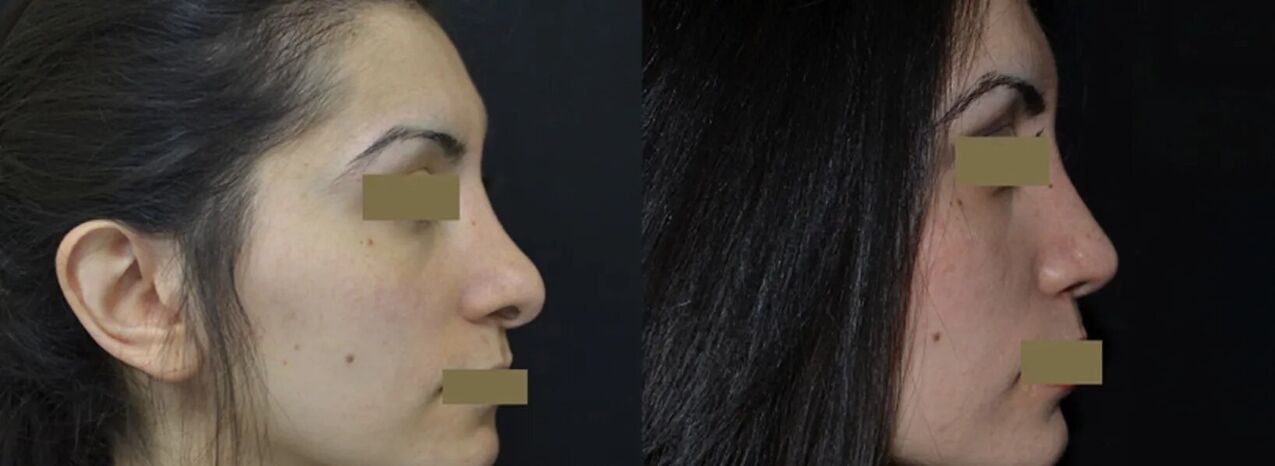
Sometimes the situation allows you to take advantage of drug therapy options without a second surgery, such as for excessively convex scars. To correct minor asymmetries, we recommend non-surgical rhinoplasty - the use of fillers or botulinum toxin-containing drugs to rotate the tip of the nose. But more often, surgical correction is still needed, such as transplanting your own cartilage tissue to fill the saddle-shaped recess or rotating the tip of the nose and restoring the shape of the nasal subdivision by correcting the position of the nasal septum and the cartilage of the nasal alar.
The possibility of re-rhinoplasty can only be discussed 6-8 months after the first rhinoplasty. This is due to the fact that it takes a long time for the tissues to recover permanently, the shape of the nose changes within a few months after the operation, and the "defects" that the patient notices immediately after the plastic surgery may disappear completely over time. , even the least invasive, always damages the tissues and nerve endings to a greater or lesser extent - so full recovery must be awaited before the second surgery.
The latest techniques in microscopic rhinoplasty are such that the consequences of unsuccessful surgery can be eliminated. The most important thing is to seek the help of a qualified professional.
Causes of complications: surgeon's fault or patient's fault?
It would be wrong to pass all the responsibility on to the patient, but it would also be a big mistake to blame the plastic surgeon for everything. The cause of the error may be both the low training of the professional and the patient's inattentive attitude to the recommendations received. In a certain percentage of cases, the "complicated nose" and other complications of rhinoplasty are associated with an unfavorable course of regeneration processes, and no one can be blamed for such a situation.
Yet the mistakes of plastic surgeons can actually cause nasal deformity after rhinoplasty. Therefore, special importance should be given to the selection of the specialist and the clinic. You can’t choose a doctor at a "low price, " you can only entrust your health and beauty to an experienced master. Otherwise, you may have to pay twice.
The following are some of the possible mistakes that plastic surgeons make and the aesthetic complications that can lead to rhinoplasty:
Improper placement of grafts. Transplantation of autologous material (the patient’s cartilage tissue) or implantation of synthetic implants is quite common during nasal reshaping. If the implants are placed asymmetrically, the patient will see a "curved nose" and pronounced asymmetry after the tissues have healed.
asymmetric correction. Many operations in nasal surgery involve the intervention of bone and porcelain in the nasal skeleton, including resection of a portion of the hard tissue. If the resection is uneven on the right and left sides, there is nose curvature and asymmetry after the rhinoplasty.
As already mentioned, the development of aesthetic complications after rhinoplasty is not always due to the surgeon's fault or the patient's irresponsibility during the rehabilitation phase. The following are the causes of complications that can be attributed to adverse conditions:
transplant extrusion. Tissue or implant transplantation is used in many nasal surgeries. Unfortunately, during the healing period, the implant can move. The result will be nose curvature or asymmetry.
Resorption of cartilage graft. A cartilage graft is a living tissue that is exposed to enzymes in the body. In the event of an unfavorable course of regeneration processes, part of the graft may be damaged by enzymes. The result will be a violation of the "curved nose" or right and left symmetry.
Cartilage graft distortion. Distortion is a Latin word translated "curvature. "Cartilage is supple and flexible. It can deform under the pressure of other anatomical formations in the nasal passage as well as severe tissue edema. As a result, the nose bends.
Violation of posterior bone and cartilage integration. During the operation, the connection between the bone and cartilage elements that make up the back of the nose is broken. If these structures do not fit properly during the rehabilitation period, a stepwise deformation will develop.
Excessive callus growth. The process of bone regeneration involves the intermediate stage of bone callus formation, which is later replaced by a full-fledged bone tissue. If the regeneration processes are too active, a surplus of tissue is formed at this site, which manifests itself externally in the form of a hump, "bulge" or asymmetry. The septum may deviate.
Hypertrophy of scar tissue in the mountain area. Due to the abnormal growth of the scar tissue, a surplus of tissue is formed in the region of the nasal tip, more precisely just above the nasal tip, which appears externally as coracoid deformity.
The following are some of the mistakes made by the patient during the rehabilitation period that can lead to nasal curvature and deformity:
- wears glasses;
- displacement or self-removal of the gypsum fixative;
- self-removal of orrological splints (tampons in the nasal passages);
- accidental mechanical damage to the nose;
- sneezing with mouth closed;
- blowing;
- alcohol consumption, smoking during rehabilitation;
- early resumption of sport.
Consequences of such an operation
Rhinoplasty is an expensive, complicated and sometimes necessary operation. What do you need to know about the consequences?
When deciding on such an operation, you should know that the procedure is full of complications. It’s not that natural difficulties are inevitable in every operation, they go away after a while. These include: blood clots, bruising under the eyes, difficulty breathing, smell, temporary asymmetry, numbness.
What could be the reason for this?
- Violation of the rules of preparation and conduct during the recovery period,
- Individual characteristics of a person.
The end result will only become known in a year, sometimes a little later. No doctor can predict for sure.
Complications after rhinoplasty
Complications after rhinoplasty can be divided into:
- aesthetics,
- functional,
- Psychological.
The last point is slightly different, it follows from the previous two. However, it is sometimes particularly highlighted as it can progress in a complex form that depends on the level of the main complication and the psyche of each person. In the same way, functional complications can leave a mark on point 1 (aesthetics), since all functional disorders also have external manifestations.
Consequences of rhinoplasty
Frequency of occurrence
Complications throughout the operation and. They can be divided into 4 periods:
- Immediately during surgery, more frequent severe blood loss,
- Immediately after surgery
- During the recovery period
- At the end of the rehabilitation period.
Complications include bleeding from rough scars, adhesions, bone damage, airway obstruction, and bruising.
The expected and unavoidable complications go away in 2 weeks. The danger of "unexpected" complications:
- infection,
- tissue necrosis (skin, cartilage, bones),
- Deviation of seams (easily eliminated).
Let’s look at some of the complications in more detail.
Types
Edema
Swelling after rhinoplasty is a natural phenomenon. It would be wrong to call it a real complication. Edema appears in the operated area and under the eyes. It is clearly visible immediately after surgery. It will fall in about two weeks. The bloating can last for a long time - up to six months. The causes of the duration and quality of edema are strictly individual.
calluses
If damage to the bone structures is required during the operation, the formation of a bone callus cannot be avoided. The presence of the norm. The complication is excessive growth of bone tissue. Such a complication involves deformation of the nose, a violation of harmony.
Callus formation after rhinoplasty is a natural process that protects the body from external influences. This is the process of bone regeneration. First, new connective tissues appear, then thin bone fibers are formed, and finally the bone tissue completely replaces the soft tissues. It is the surgeon’s job to prevent the intensity of this process.
The nose twists to the side
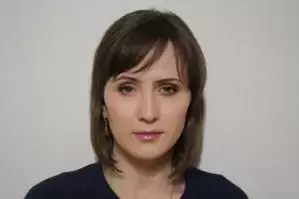
What was the purpose of the operation? If the cause was the cessation of nasal curvature, then the immediate result after surgery is pleasing, the curvature disappears. However, he may return by the end of the rehabilitation period because the nasal tissues have no "memory. "In this case, a correction is required.
But swelling can also be the cause of curvature. In this case, it is a natural complication that becomes nothing at some point. Here, too, individual characteristics play a role. For someone this period is 2 weeks, for another one month, two, three.
In any case, such curvature will be the norm. You can talk for up to a year if the problem persists.
The nose does not breathe
After rhinoplasty, nasal breathing can be caused by blockage of the nasal passages. This usually happens during the rehabilitation period. The cause of the complication is allergic or reciprocal rhinitis. This requires medical treatment. Surgery is only needed if treatment fails.
In the case of delayed complications (which occur after a long time), the nasal passages may become narrowed, which also leads to difficulty breathing. This makes you feel uncomfortable. In this case, restorative surgery is needed because the complication is caused by an increase in the amount of tissue on the inside of the nostril. It needs to be cut off.
A sagging nose
This complication is called "hollow. "This is due to deformity due to fracture of the skull during osteotomy, when fragments cannot be centralized. This may be due to excessive sealing of the nose. Corrected for repeated osteotomy only.
Bad smell
The unpleasant smell after a rhinoplasty is a natural phenomenon in the nose. It is not a complication and is acceptable in the first year after surgery.
Temperature
After rhinoplasty, body temperature rises, which is normal. It does not last longer than 3 days. In other cases (higher temperature, prolonged time) consult your doctor.
Other complications

After surgery, the sense of smell is disturbed, which is completely natural. Gradually returns to normal wheel cutting. reddish or pink in hue. Not only that, they tend to grow.
In order to eliminate them, all the requirements of the surgeon that are necessary during the recovery period must be met:
- Treatment of sutures with medication prescribed by a doctor,
- Keloid scars require corticosteroids
- In some cases, corrective surgery is prescribed.
Rhinoplasty is a serious, though quite common, operation. Not only the experience of the professional matters, but also his attitude to the procedure. Negligence is unacceptable. You must have full confidence in the surgeon, you must meet all the necessary requirements. Of course, the qualifications of the specialist cannot be in doubt.
It’s no secret that the imperfections of the face create a preconceived notion, which is important for people’s self-esteem. Loss of attraction often causes a state of depression. In other words, it is logical that facial deformities that reduce symmetry impair patients' quality of life and self-esteem.
Causes of curvature
The curved nose is a generalized term used to determine the deformities associated with the deviation of the nasal pyramid from its medial axis through the center of the face and dividing the face into equal parts.
The patient has a history of traumatic injuries and congenital nasal deformities. Of all the cheekbones, the nasal bones fracture the most, these fractures often resulting in aesthetic changes and nasal abnormalities. The curvature of the nasal septum is usually due to the deviation, and different variations in the curvature of the septum allow it to be aligned.
Nasal abnormalities can also result from asymmetric growth of nasal structures or rhinoplasty. The nose with sunken features may appear curved, although the structure does not actually deviate from the central axis. Deformities of the nasal septum sometimes occur during childbirth.
How is the adjustment done?
Today, rhinoplasty is one of the major cosmetic surgeries performed by plastic surgeons. The main indications for rhinoplasty are functional and cosmetic disorders. Rhinoplasty is a functionally and aesthetically delicate and complex surgery. Therefore, unfortunately, the level of revision rhinoplasty is quite high.
Curved nose, this is the result of a complex deformation of the structural elements, which includes:
- nasal septum;
- upper and lower lateral cartilage;
- bones of the nasal pyramid.
Which leads to functional and cosmetic disorders. The main reason for the curvature is the excessive deviation of the nasal septum.
Septic curvature
Deformations fall into two main categories. They include:
- cartilage abnormalities (lower 2/3);
- bone abnormalities (upper 1/3 of nose).
Bone abnormalities in the upper 1/3 are usually corrected by controlled rupture or osteotomy of the nasal bones and displacement to the midline. The goal of an osteotomy is to create motile bone segments that can be restored to an anatomically favorable orientation and position. The risk of bone displacement in the original curved position is low.
Nasal cartilage abnormalities are most often among the most complex deformities that are difficult to correct. Many small 1/3 deviations mean displacement of the main nasal septum. To correct it, the base is leveled, including the nasal bones and the nasal septum. Significant curvature of the cartilage may require additional cartilage transplantation.
Rhinoplasty correction
One of the most difficult tasks in rhinoplasty is the correction of a crooked nose. The curvature may persist after the first rhinoplasty, but even after the second surgery.
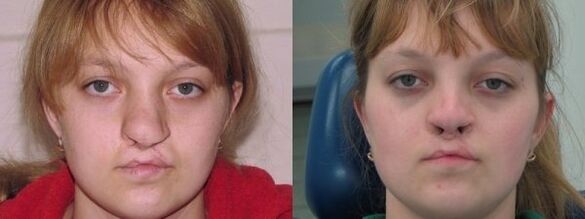
The process after rhinoplasty can be quite unpredictable. As a general rule, revision rhinoplasty may be required in approximately 3-6% of cases to correct postoperative deformities, but this number may be much higher in the case of nasal deformities.
There are several shades that complicate the correction of the curvature of the nasal structures:
- The main factor is that the curvature of the bone and cartilage tissue has a certain level of memory. Cartilage tends to return to its original position. There is a natural tension in the soft tissues and cartilage structures that continues to affect the nose after rhinoplasty, making it difficult to achieve good results after surgery. Thus, the structures of the nose tend to drift toward their original position.
- Another factor that can lead to a return of the original curved shape of the nose is incomplete correction of the deviated septum. In addition, in the case of a congenitally distorted nose, the deviation of the septum may pass through the asymmetry of the face. This means that it can be difficult to find the true mid-sagittal plane to try to place a new nose position in it.
Why is the nose crooked after rhinoplasty?
We must not forget that getting a completely straight nose is a serious challenge. After significant improvement, slight asymmetry or residual deviation may occur. Slight curvature is acceptable. The most difficult task is to make the front view symmetrical, as incident lighting casts a shadow and the nose may appear asymmetrical.
There may be several reasons why the nasal septum may be crooked after rhinoplasty. This is probably the result of asymmetric edema and / or displacement of the soft nasal bones. Healing after rhinoplasty is a dynamic process.
For the first time in a few weeks after surgery, the swelling of the structures may be asymmetric. This is likely to give the illusion that the septum is curved.
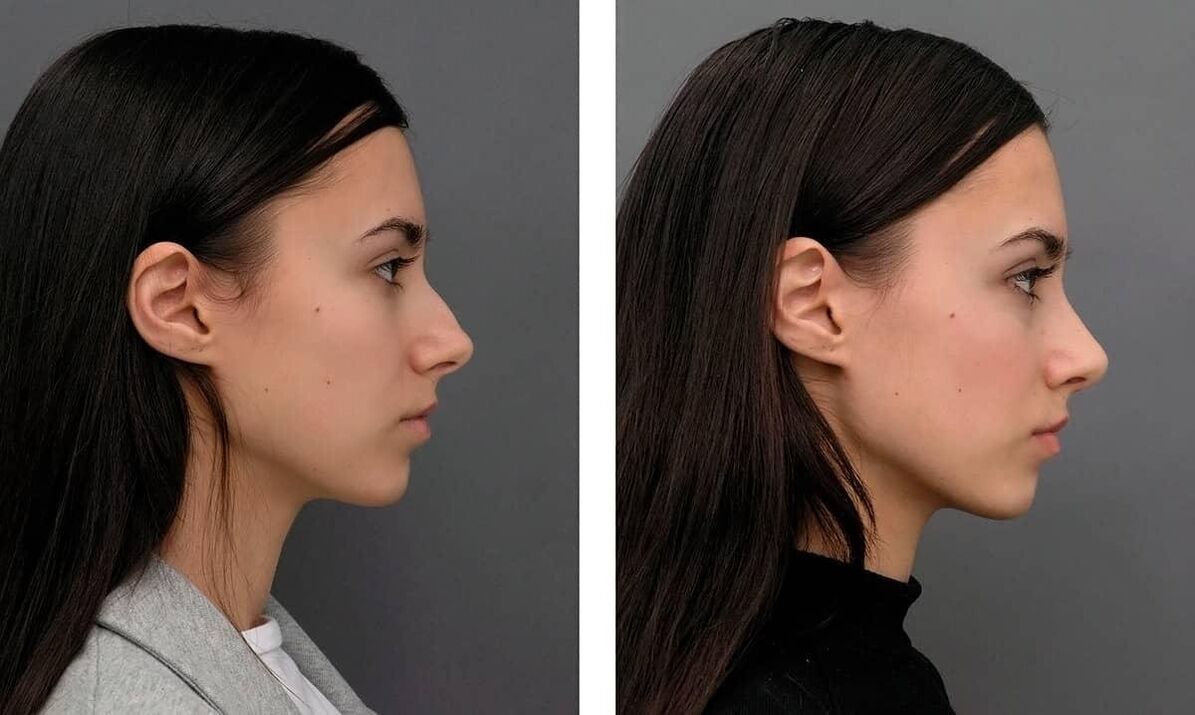
The intensity of swelling after surgery can also fluctuate in different parts of the nasal structure. Many swellings disappear within a month after rhinoplasty. It will take much longer for the last 25% of the swelling to resolve, more than a year or more after the rhinoplasty. The final effect of the surgery can last for 20-36 months.
Swelling after rhinoplasty is highly dependent on the nature of the operated structures in the nose, the surgical approach, postoperative care, and skin thickness. After open rhinoplasty, if an external incision is made at the base of the nose, the swelling will be longer and larger than with closed rhinoplasty. Those with thick skin swell better.
The swelling occurs due to gravity, which means that the upper back is already the first. Usually, the nose has some degree of swelling throughout the year.
If the septum is in line and well maintained, the nose will initially appear straighter and then, after a period of time, will most often deviate. At first, the swelling hides the abnormalities, which can become even more pronounced over time.
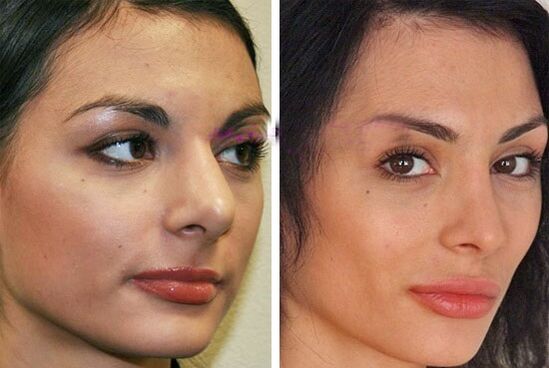
Revision rhinoplasty is aimed at correcting defects that have not been considered in the first surgery, such as a septal abnormality that distorts appearance or is the result of improper rhinoplasty or poor healing.
Rhinoplasty necessarily involves two different procedures, on the left and right sides of the nasal septum. Asymmetry may occur due to uneven correction of the sides due to different intensities of scarring during healing. Excessive porcelain removal on one side may result in curvature. The deviated septum can be corrected. Revision rhinoplasty may involve cartilage transplantation.
The complete results of the rhinoplasty can be observed after one year of observation. If the curvature of the nose persists after surgery, you should wait 5 to 10 months before starting a revision rhinoplasty. Very early surgery can lead to new problems.






















